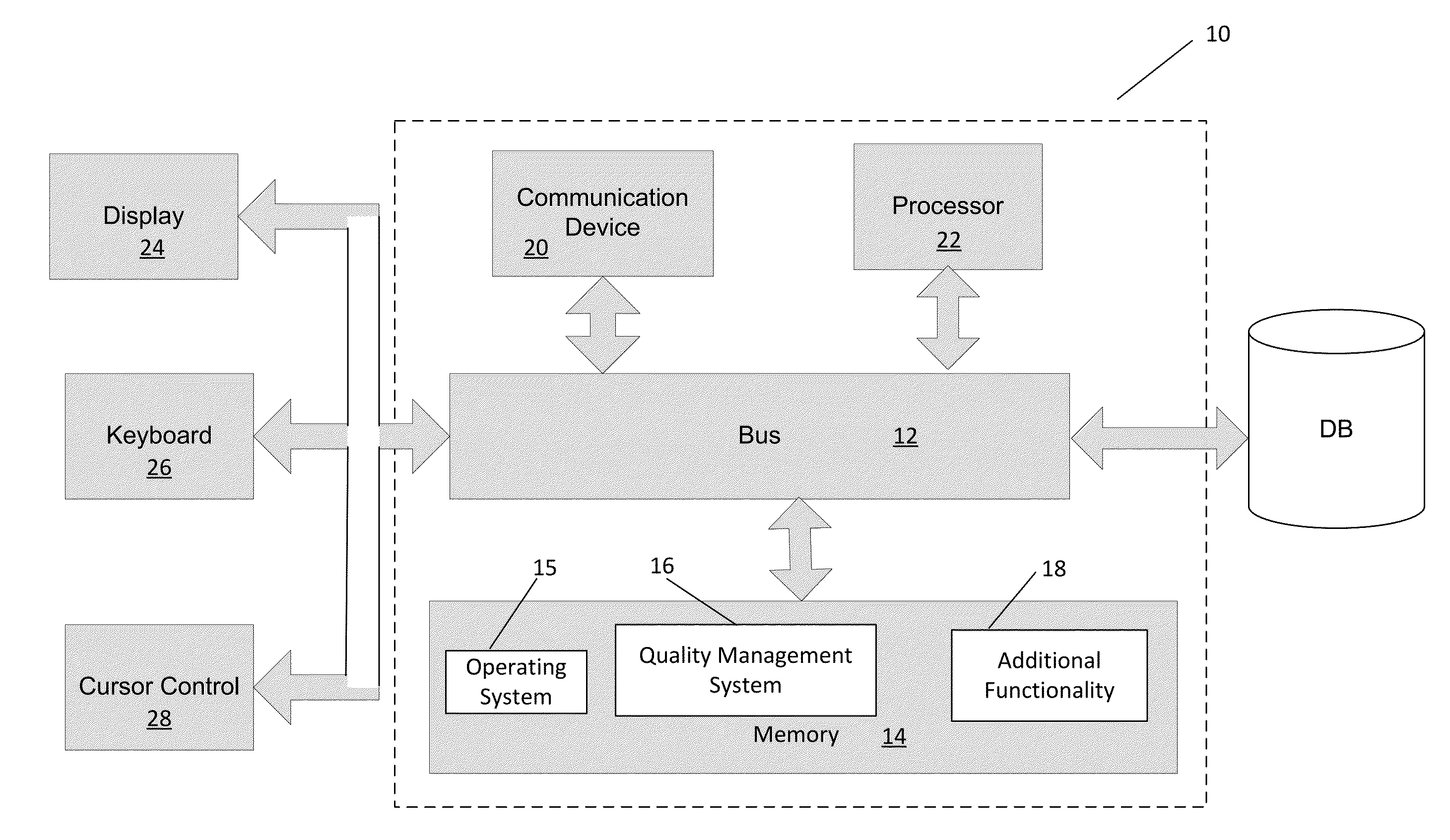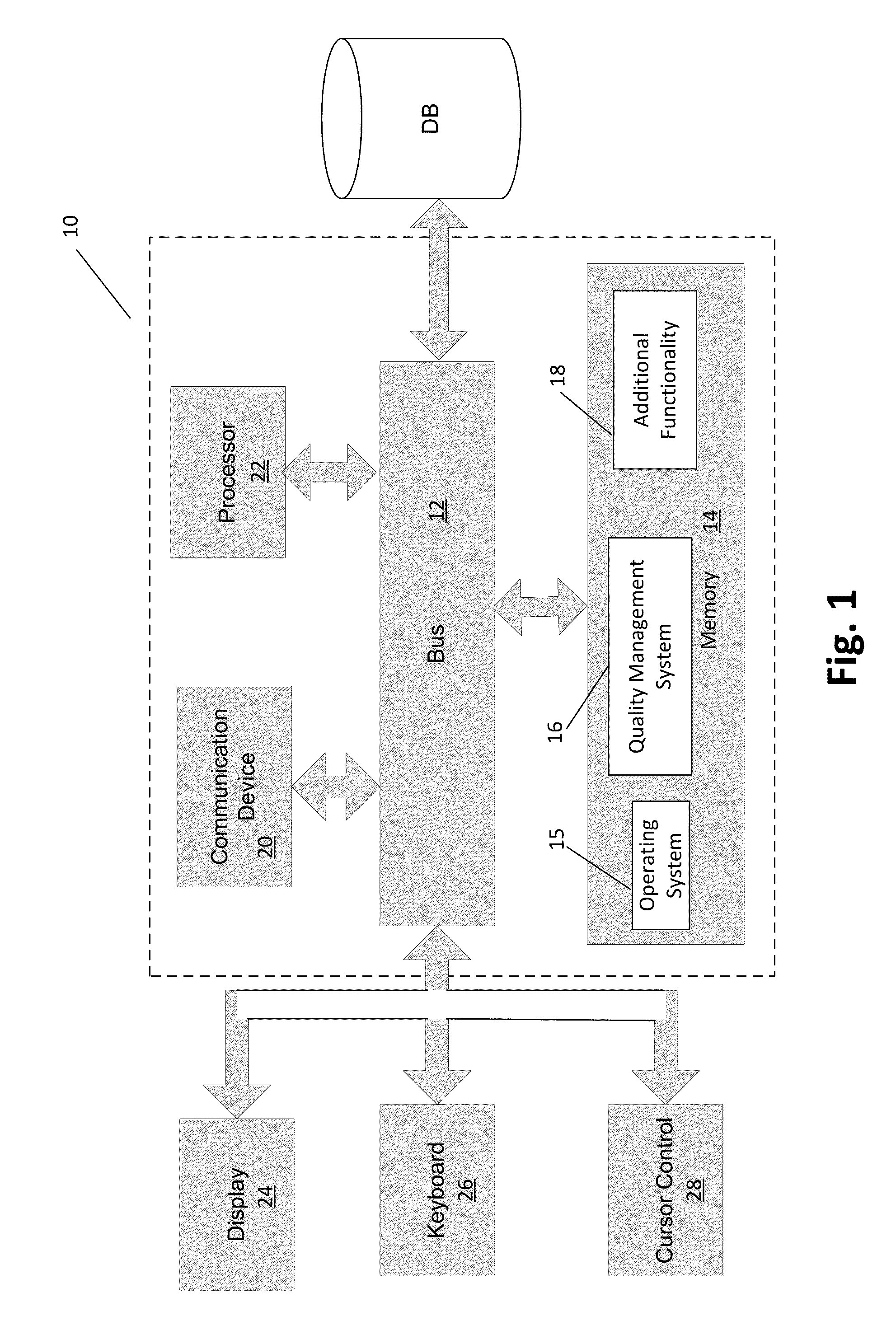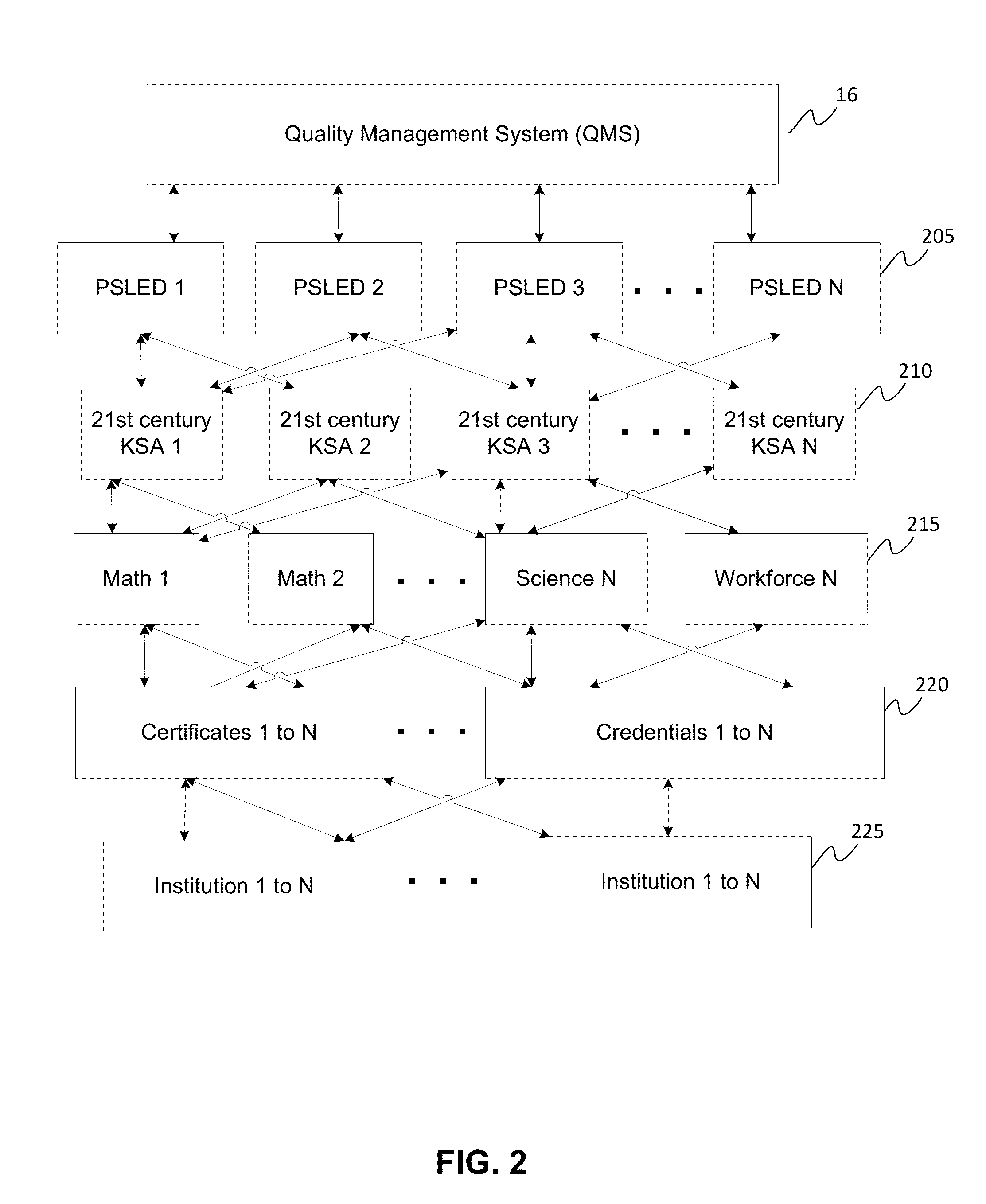Knowledge Management and Classification in a Quality Management System
a quality management system and knowledge management technology, applied in the field of learning management system, can solve the problems of more complex problems, more difficult problems, and students may present word problems in class, and little to provide students with actual real-world skills and track those skills
- Summary
- Abstract
- Description
- Claims
- Application Information
AI Technical Summary
Benefits of technology
Problems solved by technology
Method used
Image
Examples
Embodiment Construction
[0020]Recent studies on students (or any type of learner) and learning systems have argued that learning should focus on combinations of skills, knowledge, and abilities (“KSAs”). In particular, researchers argue that students need to gain and practice “21st century skills” and that the workforce needs to develop and maintain “21st century skills.” These so-called 21st century KSAs can involve skills that include learning and innovation skills, 21st century themes, life and career skills, and the like. Example learning and innovation skills can involve skills including critical thinking and problem solving, creativity and innovation, communication and collaboration, scientific and numerical literacy, cross-disciplinary thinking, basic literacy, and the like. Example 21st century themes can involve issues surrounding global awareness; financial, economic, business, and entrepreneurial literacy; civic literacy; health literacy; environmental literacy, and the like. Example life and ca...
PUM
 Login to View More
Login to View More Abstract
Description
Claims
Application Information
 Login to View More
Login to View More - R&D
- Intellectual Property
- Life Sciences
- Materials
- Tech Scout
- Unparalleled Data Quality
- Higher Quality Content
- 60% Fewer Hallucinations
Browse by: Latest US Patents, China's latest patents, Technical Efficacy Thesaurus, Application Domain, Technology Topic, Popular Technical Reports.
© 2025 PatSnap. All rights reserved.Legal|Privacy policy|Modern Slavery Act Transparency Statement|Sitemap|About US| Contact US: help@patsnap.com



